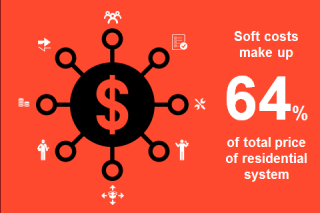Forests
are supposed to help stop climate change. These forests didn't - See
more at:
http://www.readingeagle.com/ap/article/forests-are-supposed-to-help-stop-climate-change-these-forests-didnt#sthash.WwZv2NdY.dpuf
Forests
are supposed to help stop climate change. These forests didn't - See
more at:
http://www.readingeagle.com/ap/article/forests-are-supposed-to-help-stop-climate-change-these-forests-didnt#sthash.WwZv2NdY.dpuf
Seems as though we don't have quite all the answers yet.
Forests
are supposed to help stop climate change. These forests didn't
Forests play a critical role in the global carbon cycle,
helping to mitigate climate change by storing carbon that would otherwise end
up in the atmosphere. So maintaining sustainable forest management practices
that maximize the trees' ability to act as a carbon sink - for example,
planting more trees than we harvest - has been recognized by activists as a key
strategy in the fight against climate change.
But forestry has not always had the
desired effect, according to recent research. A new study out in the journal
Science Thursday makes the provocative claim that more than 250 years of forest
management in Europe have actually contributed to climate change, rather than
helped to stop it.
The study reconstructs the land-use
history of Europe from 1750 through the present day, taking into account both
changes in land cover - that is, deforestation and afforestation - and
management changes, including changes in the types of trees planted and the
amount of wood harvested. The researchers then used models to examine the
effects of these changes on the climate over time.
Through their reconstruction, the
researchers made some key observations about the ways forests have changed in
Europe in the past 250 years. First, they found that while deforestation
removed nearly 200,000 square kilometers (or around 75,000 square miles) of
forest cover in Europe between 1750 and 1850, subsequent reforestation efforts
not only made up for the losses, but actually resulted in a net gain in
Europe's overall forest cover during the study period.
They also noted that these
reforestation efforts tended to favor conifer trees, which produce a more
commercially valuable type of wood, rather than the broad-leaved forests that
dominated the landscape before. Broad-leaved trees are usually deciduous trees
and have flat leaves, such as oaks. Overall, conifer cover increased by 633,000
square kilometers, while broadleaf cover decreased by 436,000 square
kilometers.
Finally, they observed that in the
past 250 years, approximately 85 percent of Europe's forests came under human
management and have been subjected to wood extraction practices, such as tree
thinning and litter raking.
These changes have had a number of
effects on the climate since 1750, the models suggested. While it may seem as
though a net gain in tree cover should have been good for the climate, the
researchers found that Europe's forests have actually accumulated a carbon
debt, releasing 3.1 billion metric tons of carbon into the atmosphere overall
since 1750.
"European forests have failed
to realize a net [carbon dioxide] removal from the atmosphere, and this is due
to the fact that humans extracted wood from unmanaged forests by bringing these
forests under management," said the study's lead author Kim Naudts, a
researcher with the University of Versailles' Climate and Environmental
Sciences Laboratory at the time the work was conducted.
"Even a well-managed forest
today stores less carbon than its natural counterparts in 1750," Naudts
said.
Additionally, the researchers found
that replacing broadleaved forests with conifers had another unintended warming
effect. Conifer leaves tend to be darker than those of broadleaved trees,
Naudts pointed out, so they allow more sunlight to be absorbed.
And, Naudts added, "the other
effect is that they are more conservative with water, which leads to less
evapotranspiration, and to drier air." Evapotranspiration is the process
by which water evaporates out of a tree's leaves into the atmosphere. The
resulting drier air also contributed to a warming effect.
Overall, the researchers found that
there was an increase in air temperature over the forests of about 0.12 degrees
Celsius during the study period. This finding represents an especially
interesting aspect of the paper, according to Rupert Seidl, a professor in the
Institute of Silviculture at the University of Natural Resources and Life
Sciences in Vienna, in an email to The Washington Post. (Seidl was not involved
with the study.) And extending the paper's climate analysis beyond simply the
amount of carbon released by the forests into the atmosphere is "important
to get a better and more comprehensive understanding of the role forests play
in the climate system," he said.
Altogether, the study concludes that
forest management in Europe over the past 250 years has not been the climate
boon that some might have hoped for. In the paper's abstract, the researchers
suggest that "the political imperative to mitigate climate change through
afforestation and forest management. . . risks failure, unless it is recognized
that not all forestry contributes to climate change mitigation."
However, not all experts agree with
the authors' harsh conclusions. Seidl, for instance, pointed out that using
forests as a climate change mitigation tool is a new approach, one that did not
exist for the majority of this paper's study period.
"The goal of past management
was primarily to ensure local energy supply and maintain food security, and not
regulating global climate," he said in his email. "So blaming past
management for not cooling the climate is like blaming it for something it
never set out to do in the first place."
And other experts argued that the
way the study was designed - examining the blanket effects of one long block of
time from 1750 on - obscures the fact that more recent forest management
techniques have had better results. According to Marcus Lindner, head of the
Sustainability and Climate Change Research Programme at the European Forest
Institute, forest management techniques started to have a positive mitigation
effect in Europe in the 1950s.
"Obviously forest loss and
forest degradation strongly contributed to greenhouse gas emissions until the
1950s," said Lindner, who was not involved with the study, in an email to
The Post. "I find it not credible to combine 200 years of suspected
negative contribution to climate change mitigation with 60 years of positive
climate change mitigation through management and then claim that (based on
combined 260 years) forest management does not work."
Asked about this, Naudts said that
the researchers started with 1750 because that's the year used as a reference
by the U.N.'s Intergovernmental Panel on Climate Change, and "from a
climate perspective, that's a very logical reference."
So it may be that forest management
in Europe has had greater success in climate mitigation when a more recent
history is considered. Regardless, the study's authors suggested that paying
more attention to the specific effects of certain land-use and management
changes on the climate - as revealed by their historical effects - will benefit
future forestry efforts.
Naudts, for instance, suggested that
foresters should not make management decisions based solely on the amount of
carbon that will be released or stored under certain strategies. "If we
manage them only for carbon we ignore the other unintended changes, like changes
in solar radiation, absorption and evapotranspiration, and our study shows that
those are actually quite important," Naudts said.
And she added, "In Europe, it
could be wise to avoid the use of conifers when you do afforestation or when
you are managing your forests."
A further key point to consider,
according to Seidl, is that even current forest management "not only aims
to cool the climate, but also is providing a wide range of other ecosystem
services to a growing human population, from fiber and fuel to recreation and
the provisioning of clean water."
This is an issue considered by the
authors of the study in their conclusions as well. The question they raise at
the end of their paper is whether it's possible to design management strategies
that cool the climate while simultaneously preserving the other ecosystem
services that forests provide to humans, such as wood production.
"I agree with Naudts et al.
when they conclude that the key challenge for forest management is to develop
strategies that fulfill a wide range of these functions and services -
including climate change mitigation - simultaneously," Seidl said.


 Technology development, commercialization, and scaled-up manufacturing have greatly reduced solar hardware costs since the inception of the SunShot Initiative. However, driving down solar non-hardware soft costs such as financing, customer acquisition, permitting, installation, labor, inspection, and other expenses will help spur strong U.S. growth in solar deployment in the coming years. Taken together, soft costs make up as much as 64% of the total cost of going solar. Catalyst aims to leverage powerful datasets and use innovative software, information technology, and automation solutions to make it faster, easier, and cheaper than ever before to deploy solar technology across America.
Technology development, commercialization, and scaled-up manufacturing have greatly reduced solar hardware costs since the inception of the SunShot Initiative. However, driving down solar non-hardware soft costs such as financing, customer acquisition, permitting, installation, labor, inspection, and other expenses will help spur strong U.S. growth in solar deployment in the coming years. Taken together, soft costs make up as much as 64% of the total cost of going solar. Catalyst aims to leverage powerful datasets and use innovative software, information technology, and automation solutions to make it faster, easier, and cheaper than ever before to deploy solar technology across America.



